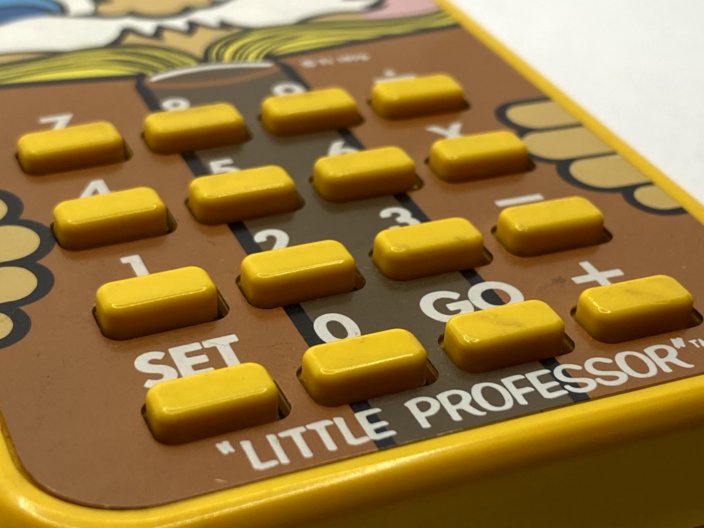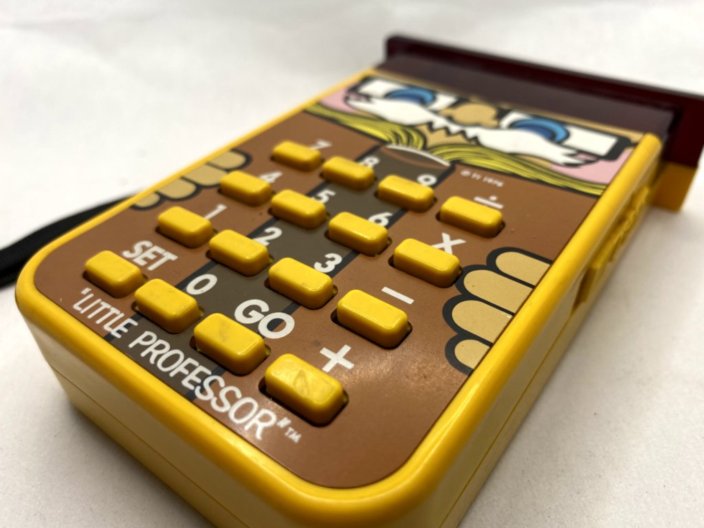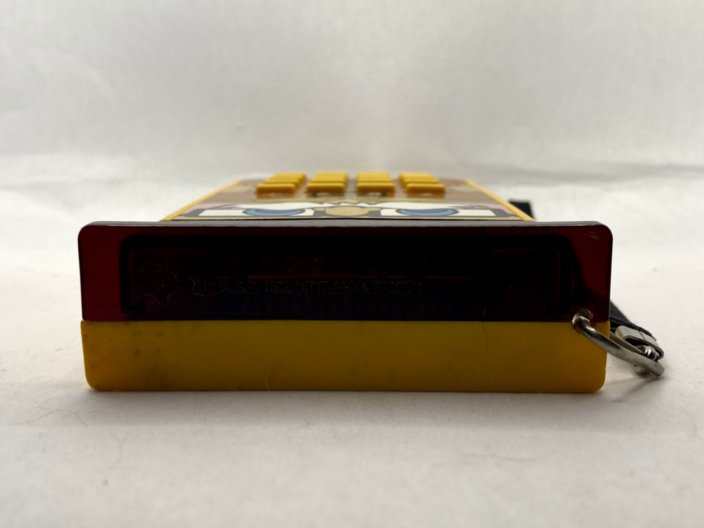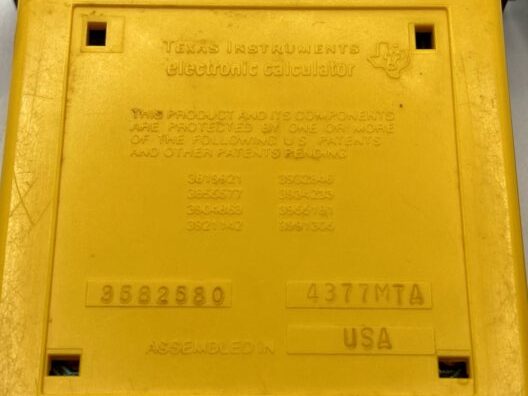How the Little Professor Almost Launched an Army of Educational Professors
October 4, 2020While it may not be high on the list for most handheld game collectors, the Little Professor remains one of my most cherished possessions.
Initially released on June 13, 1976, the Little Professor was a sort of backward calculator designed to feel a bit like a game. The handheld looks a bit like a calculator etched into the cover of a book held by a glasses-wearing mustachioed man. The LED display is shaped to look a bit like a professor’s mortarboard complete with a tassel that serves as a wrist strap.
For some reason, Texas Instruments — which made the device — says the design was meant to look like a “wise and friendly owl,” which is odd, seeing as the professor clearly has a human nose.
The game presents an incomplete formula, like 5 x 2, in vibrant red numerals and expects the player to type in the appropriate answer. There are four levels, selected by a slide located on the right side of the handheld. The power switch is on the left side of his head. It’s a pretty straightforward educational game and TI says it’s the first-ever made.
Whether that’s true or not, it’s clear the little yellow edu-game was a smash when it came out. The company couldn’t keep the $20 handheld in stock at stores, despite ramping up production in 1976. And in 1977, the company sold more than a million units.
Perhaps more importantly, the success of the Little Professor led to Texas Instruments’ decision to continue in the electronic educational toy field and to the creation of Speak & Spell, a learning aid that garnered just a bit more attention than the diminutive yellow backward calculator. And yes, it also pre-dated the robot-like Dataman, which was released in 1977 and is far inferior to this perfect piece of yellow tech.
I actually tried to track down the original designer of the Little Professor to find out what made Texas Instruments decide to suddenly drop into this highly niche field. But I didn’t have a lot of luck. What I was able to do, though, was track down one of the people who was involved in the redesign of the toy for rerelease years later.
Mark Baily, now an associate professor and director of transnational education: design, at Northumbria University’s School of Design, was a design intern working for the Raffo and Pape design agency at the time.
He was part of a team of six or so who were asked to look at a whole range of new possibilities that Little Professor had opened-up.
“The idea was to re-design the old first and second-generation LP and launch other new products on the back of this,” Baily told me in a recent email. “My recollection is that this range included things like a music professor, a time-telling professor, and some others. Most projects in the studio involved an element of team creativity with everyone chipping in, but John Pape and Shaun Woodward were the real creative brains behind most of our work.
“The big thing about the re-design was that we were trying to do new things with the LCD display to animate the eyes to give the children a reward (a wink, a raised eyebrow, or rolling eyes for wrong answers). We were trying to get the very most out of monochrome LCDs and at a price. So most of my work involved the manual drawing of lots and lots of alternative LCD arrangements that would allow for the maximum number of eye expression combinations – I remember spending a lot of time on that.”
The idea was to reinvigorate the notion that math could be fun by injecting these new facial expressions through eye movement, he said. Unfortunately, the fully animated eyes never made it to production because of the cost, so the end result was simply a facelift.
While Bailey’s work didn’t lead to a massive change for LP, there were other iterations. A solar version was introduced in the 2000s, and an emulator of the Little Professor was published in 2012.
Despite not being able to achieve a full rework of the Little Professor, Bailey remains proud of the fact he was able to work on so well-like a device.
“So many people remember it fondly and so many people still, incorrectly, refer to it as a ‘calculator,” he said. “So, on one hand, it’s something of an icon and on the other, much misunderstood.
“But the success of the first generation LP certainly set the scene for TI to develop Speak ‘n’ Spell, Speak & Maths, Touch & Tell, etc. and I guess that probably opened up a market which others such as Vtech were able to compete in.”
Love retro handhelds? Well then, have I got a bunch of stories, videos, and pictures for you.







